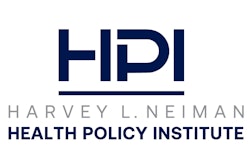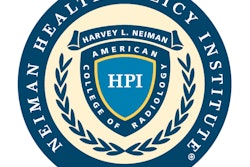Impeded by a smaller number of radiology-applicable quality measures, in 2021 radiologists in radiology-only practices scored significantly lower on relevant Merit-based Incentive Payment System (MIPS) gauges compared with other specialties.
In contrast, those in multispecialty practices scored higher in the U.S. Centers for Medicare and Medicaid Services (CMS) MIPS, although they rarely reported radiology-relevant MIPS quality measures, instead tracking those relevant to other specialties, according to a research letter from the Harvey L. Neiman Health Policy Institute (HPI) published April 3 in the American Journal of Roentgenology.
"Our results clearly show that radiologists are at a disadvantage in the MIPS program, with very few available measures, most of which are topped out -- meaning that scoring well isn't possible because average scores are too high," said study co-author Lauren Nicola, MD, CEO of Triad Radiology Associates and chair of the American College of Radiology's (ACR) commission on ultrasound.
The MIPS was established by the Medicare Access and CHIP Reauthorization Act of 2015 (MACRA) and took effect in 2017. It was an effort on CMS' part to offer economic incentive for providers to deliver quality and cost-efficient care. But since it began, it has proven tricky for radiology, the investigators noted, explaining that the specialty doesn't have as many MIPS measures as some others do.
"Unfortunately, the upside in MIPS is not equal across specialties," said lead researcher YoonKyung Chung, PhD. "In 2021, there were only nine available MIPS measures for diagnostic radiology, compared to 65 in family medicine."
Chung and colleagues explored how fewer measures might affect radiologists' performance in the MIPS program, and if this varied based on the practice type (for example, if a practice consisted only of radiologists or if it was a diverse multispecialty practice). The team conducted a study that included information from the 2021 CMS Provider Data Catalog to identify radiologists who participated in MIPS, and their affiliated practices; the work included 2,333 practices with 35,578 radiologist-practice pairs and reported quality measures were from 2021 Quality Payment Program Experience Report data.
The group found that radiologists' MIPS performance was "heavily influenced by their practice type," Chung said.
"In MIPS, a physician can report performance data for any measure applicable to providers in their practice, not solely their own specialty," she noted. "We looked at the top ten measures reported most frequently by radiologists in each practice type … [and] the results were striking: For radiologists in a multi-specialty practice that wasn't mostly radiologists, not a single radiology-focused measure was among that list."
The researchers also found that most commonly reported radiology measures in multi-specialty practices consisted of blood pressure and diabetes control interventions, screening for fall risk, and hospital-wide unplanned readmission rates – none of which are in the scope of practice for radiologists," the institute said. In fact, on average, only 1.8% of reported measures by radiologists in multispecialty practices were radiology measures.
The MIPS program needs to be revised, according to Nicola.
"Our study sends a clear message: the MIPS program in its current design won't move the needle on quality in radiology," she said. "For MIPS to work as intended, physicians must report measures relevant to their specialty, which will require more measures that distinguish quality among radiologists."
The complete letter can be found here.



















